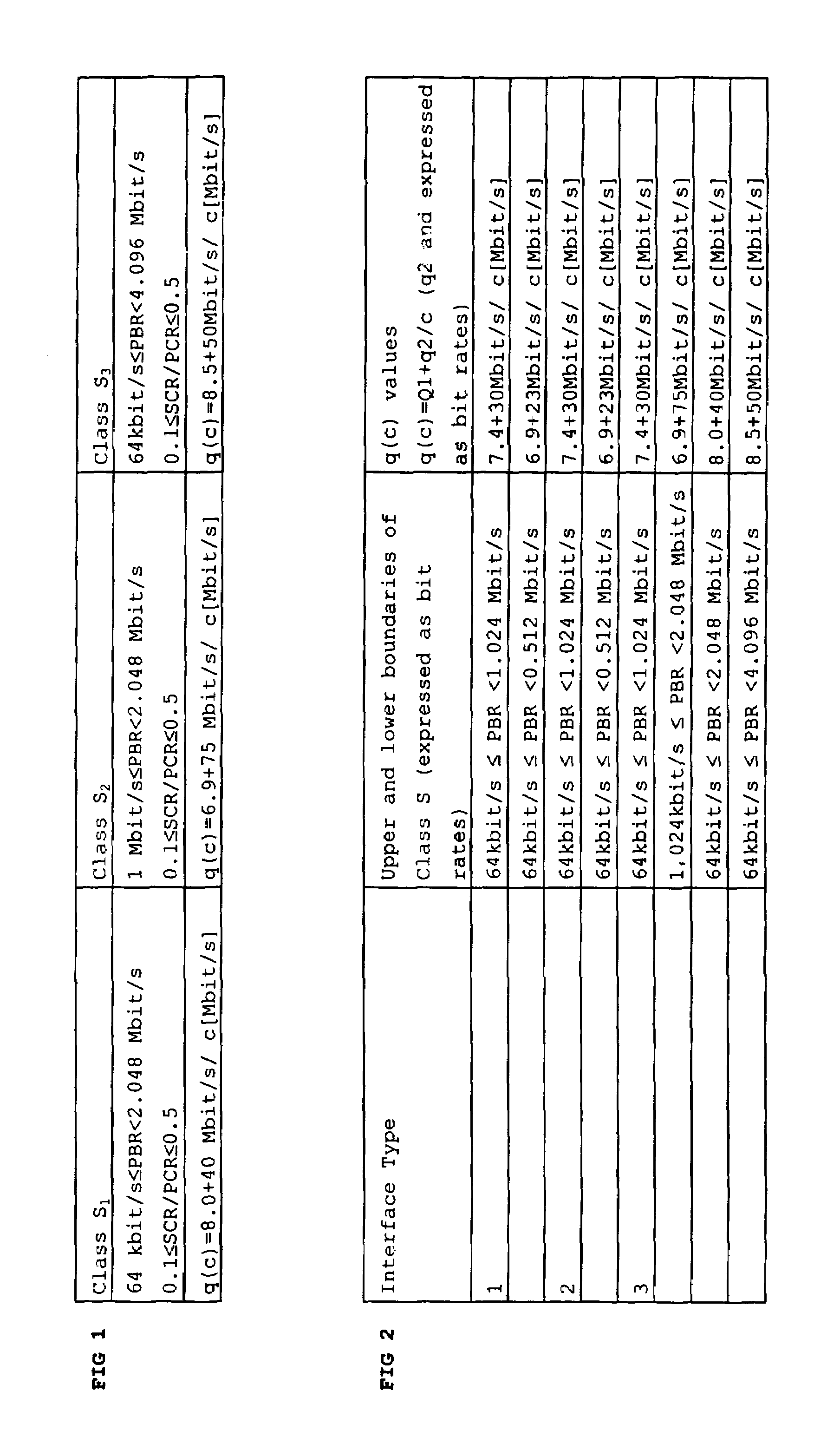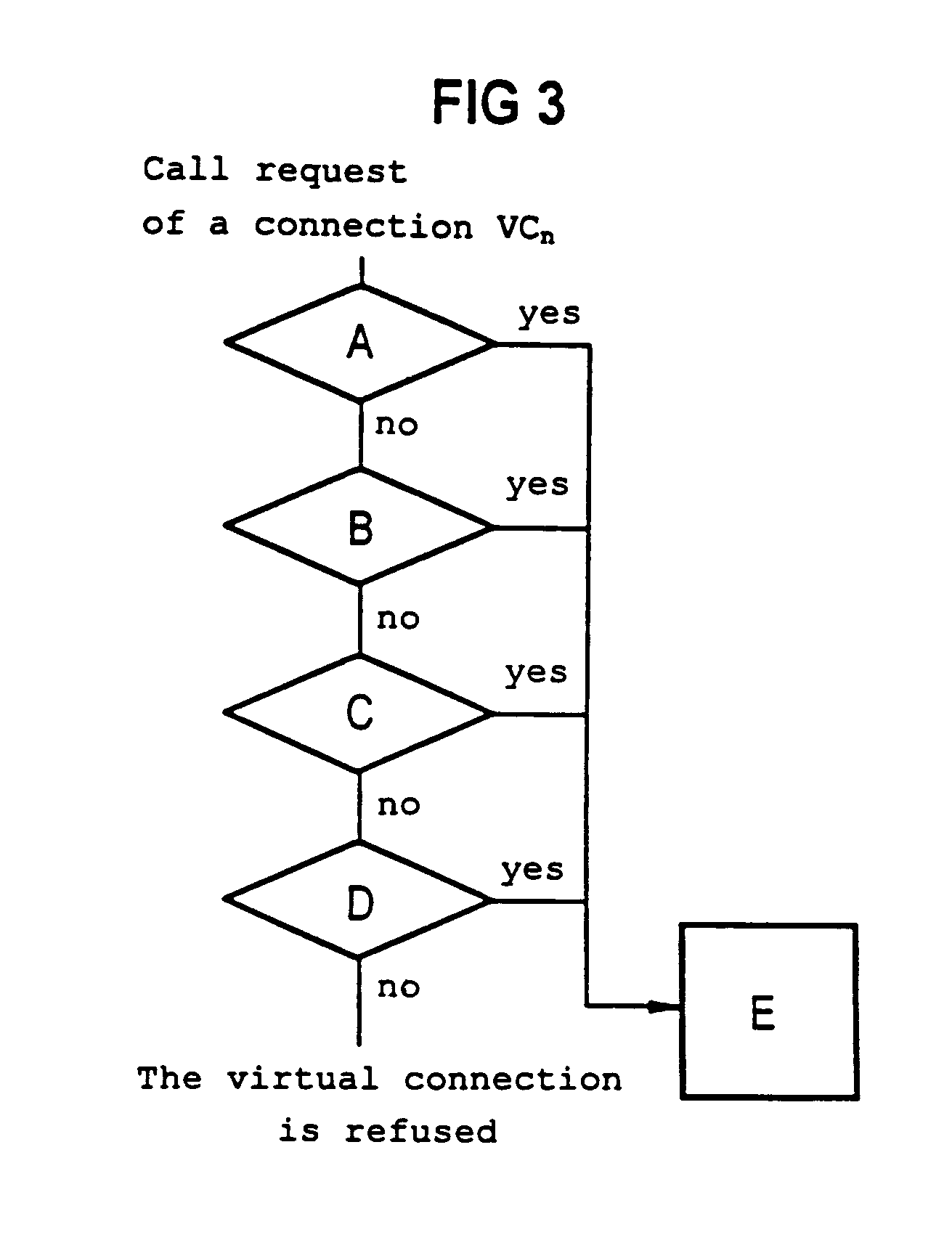Statistic multiplexing of ATM-connections
- Summary
- Abstract
- Description
- Claims
- Application Information
AI Technical Summary
Benefits of technology
Problems solved by technology
Method used
Image
Examples
Embodiment Construction
[0027]By way of example, FIG. 1 shows the basic idea of the method according to the invention, in tabular form. In this case, the basic principle is first of all explained for only one transmission rate.
[0028]Class S is accordingly split into a plurality of sub-classes S1, S2 and S3. By way of example, only 3 sub-classes are disclosed, although, according to the present invention, subdivision may also be carried out into a multiplicity of sub-classes. When an new call request arrives, the sigma rule algorithm must therefore check conditions (a) and (b) in the present exemplary embodiment to determine the sub-class to which the new connection must be assigned. If condition (a) is not satisfied, then, in the present exemplary embodiment, the connection must be assigned to the appropriate sub-classes, and condition (b) needs to be checked at most 3 times. The best sub-class Sx is then selected automatically.
[0029]A sub-class Sx is in this case defined by a lower limit and / or upper limi...
PUM
 Login to View More
Login to View More Abstract
Description
Claims
Application Information
 Login to View More
Login to View More - R&D
- Intellectual Property
- Life Sciences
- Materials
- Tech Scout
- Unparalleled Data Quality
- Higher Quality Content
- 60% Fewer Hallucinations
Browse by: Latest US Patents, China's latest patents, Technical Efficacy Thesaurus, Application Domain, Technology Topic, Popular Technical Reports.
© 2025 PatSnap. All rights reserved.Legal|Privacy policy|Modern Slavery Act Transparency Statement|Sitemap|About US| Contact US: help@patsnap.com



